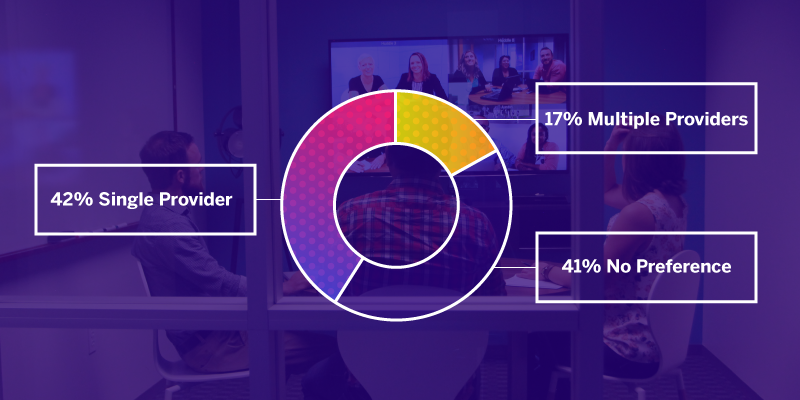
All-in-One Solution vs. DIY Collaboration Stack
In an organization, having a collaboration stack could mean one of two things. Some companies prefer a single solution that offers their users multiple modes of collaboration, and others prefer to cultivate a collection of several independent and specialized tools to build out a custom solution.
While both methods are sensible ways of operating, it’s easy to compare the two and feel that the grass seems greener on the other side. On one hand, having one universal system for all the different ways you communicate seems too good to be true. And on the other hand, having to manage multiple tools all at once may be a reasonable price to pay for specialized user preferences.
In a recent survey that we conducted with the Spiceworks IT community, we wanted to see exactly what IT decision-makers preferred in the workplace. We discovered that out of the 155 IT admins who participated, 42% preferred a single communications provider, 17% preferred multiple providers, and 41% had no preference.
The main reason that IT professionals look to multiple vendors is the need for compatibility with external parties such as customers and partners, while other IT professionals favor all-in-one solutions for the simplified management and user interface. Here’s a breakdown of the survey findings:
A Single Solution
| PROS | CONS |
|
|
“We’d prefer it to be a unified system rather than a bunch of different ones of different companies we’d have to deal with.” – IT professionals, Spiceworks Survey
Multiple Solutions
| PROS | CONS |
|
|
“I’d rather have four providers that do their thing very well than one provider who does four things with mediocrity.” – IT professionals, Spiceworks Survey
Both versions of collaboration stacks have their strengths, so it’s important to evaluate communication solutions based on your own organization’s requirements and resources. While managing multiple solutions might work for your organization right now, don’t let the seamlessness of an all-in-one solution scare you away. In general, unified communication platforms minimize distractions by smoothly combining chat, audio, video and web conferencing within one application, centralizing collaboration and minimizing barriers of connection.
Source : The Lifesize Blog
